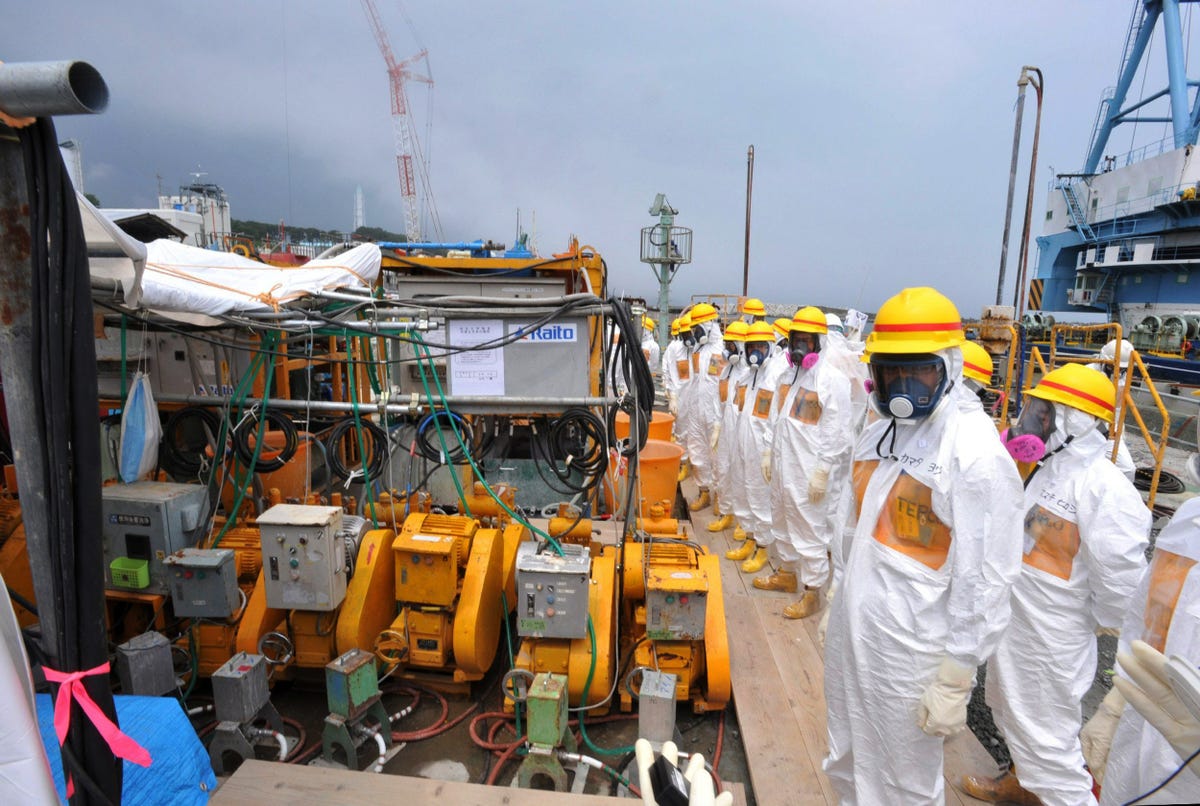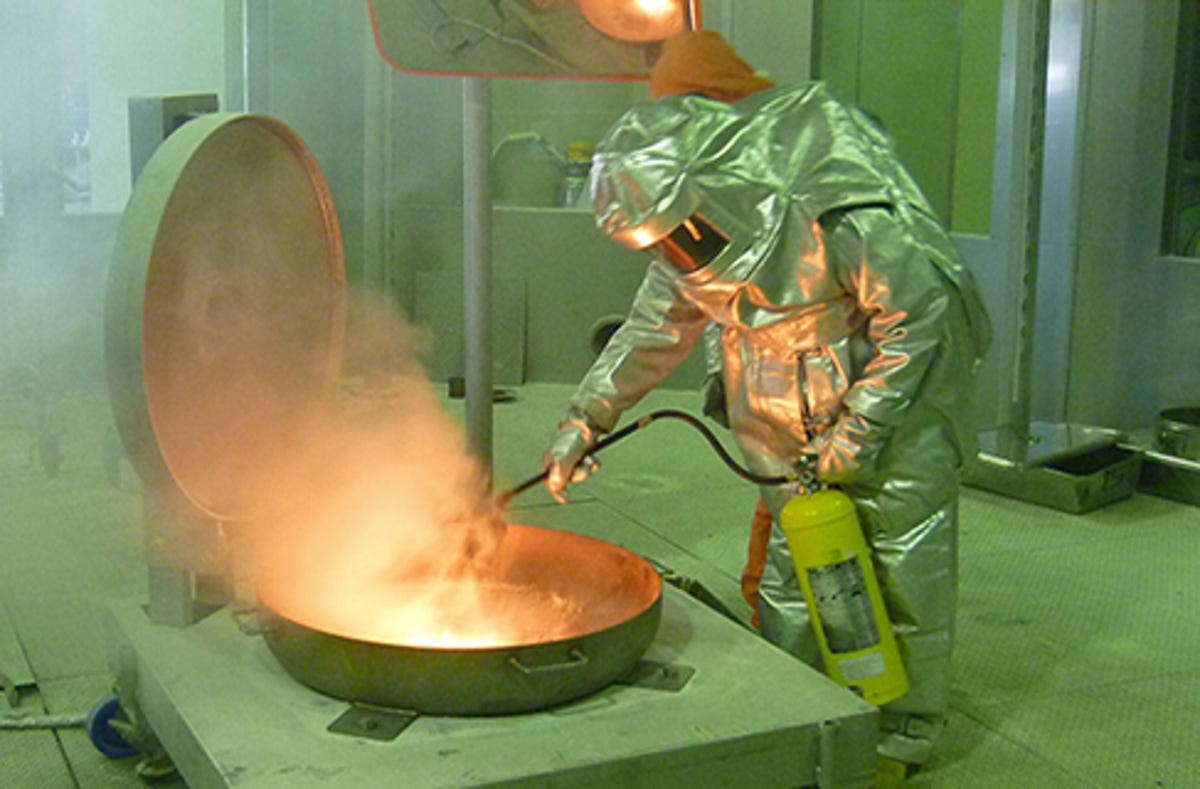The (ongoing) lesson of Fukushima? It could have been worse
From Chernobyl to Fukushima, "it could have been worse" has become a common refrain over the last few decades. But that optimism comes at a price -- in the coin of public health.

Fukushima Dai-ichi: The latest botch
As operators struggled to contain a tank leak at the Fukushima Dai-ichi nuclear reactor, Japanese authorities have now declared a level three "serious incident." (Japan uses a seven-point scale.)
Last week officials backtracked from earlier statements and admitted that contaminated water has been flowing into the Pacific Ocean. In March 2011, an earthquake knocked out the plant's cooling systems and resulted in the country's biggest nuclear disaster since the end of the second world war. In this image, inspectors are photographed as they arrive at the facility in a bid to prevent more water from seeping into the sea.
Fukushima: The immediate aftermath
The cover for the reactor is seen in the No. 4 reactor building at Tokyo Electric Power Co.'s Fukushima Dai-Ichi nuclear power plant. The plant's systems failed after an 8.9 magnitude quake - and the tsunami which followed - rocked the region.
Three Mile Island
The most serious nuclear accident in United States history occurred at Three Mile Island in Pennsylvania on March 28, 1979. About 140,000 people were forced to evacuate their homes after a combination of equipment malfunctions, problems with the design of the reactor, and human error led to a partial meltdown of the TMI 2 reactor core.
Although the partial meltdown resulted in some contamination within the plant, nobody died or got injured. However, the accident stirred public protest and subsequently led the US Nuclear Regulatory Commission to tighten its regulatory oversight over the industry. It also contributed to a freeze in the construction of new nuclear plants in the US over the next three decades.
Chernobyl
A major explosion at the Chernobyl nuclear plant affected 3,235,984 Ukrainians and sent radioactive clouds all over Europe.
Reactor No. 4 at the Chernobyl plant in Ukraine, then part of the Soviet Union, exploded on April 26, 1986. Around 200 people died after a ruptured reactor vessel and fire caused the explosion, resulting in radioactive materials being released into the environment. Geiger counters registered about 80,000 microroentgens an hour, 16,000 times the safe limit.
Chernobyl after the accident
The worst nuclear accident of the 20th century, this televised image shows an American satellite shot of the Chernobyl nuclear plant after the reactor's blast on April 26, 1986.
Ghost town
Researchers tracking an increase in the number of thyroid cancer cases in the region believe the rise is related to the Chernobyl accident. However, the long-term health impact on local residents is still unclear and experts believe it will take years to quantify.
Tomsk-7
On April 6, 1993, a Russian nuclear reprocessing site in Siberia known as Tomsk-7 caught fire after an underground tank exploded, sending up a radioactive cloud. The reactor was believed to have been involved in the production of weapons-grade nuclear fuel, but authorities kept a tight lid on the release of information about the accident. The number of casualties is unknown. Despite the end of the Cold War, the area remains closed to non-residents, and visitors must present entry documents at checkpoints.
Windscale: Britain's worst nuclear accident
On October 10, 1957, an undetermined amount of contamination got released into the air after the graphite core of Britain's first nuclear reactor, a site at Windscale, Cumberland (now Sellafield, Cumbria) caught fire.
The incident, known as the Windscale fire, was the worst nuclear accident in England's history. Five decades later, medical researchers reported mortality and cancer rates for workers involved in the 1957 fire "does not reveal any measurable effect of the fire upon their health." (You can read the report of a British board of inquiry into the accident here.) The former Windscale power station was shut down and decommissioned.

Japan's 1995 Monju reactor
A fire and subsequent cover-up that sparked public anger led to a 14-year shutdown of the Monju fast-breeder nuclear reactor in Tsuruga, Fukui prefecture, west of Tokyo.
The official charged with investigating the cover-up would later commit suicide by jumping from the roof of a Tokyo hotel. He was not involved in the cover-up, but reports at the time said he was distressed by the evidence that came across his desk. Here's a leaked video of the accident which came to light afterwards.

